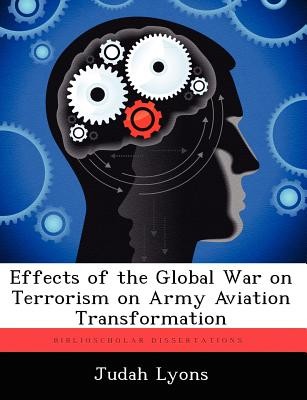
- We will send in 10–14 business days.
- Author: Judah Lyons
- Publisher: BiblioScholar
- ISBN-10: 1249408261
- ISBN-13: 9781249408260
- Format: 18.9 x 24.6 x 0.4 cm, minkšti viršeliai
- Language: English
- SAVE -10% with code: EXTRA
Effects of the Global War on Terrorism on Army Aviation Transformation (e-book) (used book) | bookbook.eu
Reviews
Description
Over the last eight years, combat operations in support of the Global War on Terrorism (GWOT) have put a tremendous strain on the US Army's aviation fleet. In February 2004, the Army canceled the cornerstone of Army Aviation Transformation, the $48 billion RAH-66 Comanche Program. In October 2008, the contract for the ARH-70 "Arapaho" was also canceled. With the cancelation of two helicopter projects in four years, some would argue that the GWOT negatively affected Army Aviation Transformation. On the other hand, the Global War on Terrorism had a positive impact on Army Aviation Transformation. The GWOT provided a sense of urgency; no longer could Army Aviation afford to wait for decades for Transformation. The GWOT forced Army Aviation leaders to reevaluate Transformation priorities and vision for the future. The GWOT was a catalyst that caused many challenges and changes to Army Aviation Transformation, which ultimately resulted in a more balanced Transformation across the entire aviation force. Rather than focusing solely on a large conventional threat, the transition to a multi-functional Combat Aviation Brigade provided the capability required to conduct full spectrum operations, across the entire spectrum of conflict. However, the question remains, what additional Transformation is required to meet the threats of the 21st Century? The recommendations proposed in this thesis could be used to modify and update Army Aviation Transformation efforts and force structure development to further strengthen the future of Army Aviation.
EXTRA 10 % discount with code: EXTRA
The promotion ends in 21d.14:22:53
The discount code is valid when purchasing from 10 €. Discounts do not stack.
- Author: Judah Lyons
- Publisher: BiblioScholar
- ISBN-10: 1249408261
- ISBN-13: 9781249408260
- Format: 18.9 x 24.6 x 0.4 cm, minkšti viršeliai
- Language: English English
Over the last eight years, combat operations in support of the Global War on Terrorism (GWOT) have put a tremendous strain on the US Army's aviation fleet. In February 2004, the Army canceled the cornerstone of Army Aviation Transformation, the $48 billion RAH-66 Comanche Program. In October 2008, the contract for the ARH-70 "Arapaho" was also canceled. With the cancelation of two helicopter projects in four years, some would argue that the GWOT negatively affected Army Aviation Transformation. On the other hand, the Global War on Terrorism had a positive impact on Army Aviation Transformation. The GWOT provided a sense of urgency; no longer could Army Aviation afford to wait for decades for Transformation. The GWOT forced Army Aviation leaders to reevaluate Transformation priorities and vision for the future. The GWOT was a catalyst that caused many challenges and changes to Army Aviation Transformation, which ultimately resulted in a more balanced Transformation across the entire aviation force. Rather than focusing solely on a large conventional threat, the transition to a multi-functional Combat Aviation Brigade provided the capability required to conduct full spectrum operations, across the entire spectrum of conflict. However, the question remains, what additional Transformation is required to meet the threats of the 21st Century? The recommendations proposed in this thesis could be used to modify and update Army Aviation Transformation efforts and force structure development to further strengthen the future of Army Aviation.


Reviews